Museum of Media History | MMH | Berlin
Xanadu
A Vision in a Dream<br>
Founded 1960 * The Original Hypertext Project
PROJECT XANADU®
A Vision in a Dream
Founded 1960 * The Original Hypertext Project
Xanadu was the first hypertext project, founded in 1960 by Ted Nelson with the goal of creating a computer network with a simple user interface. The effort is documented in his 1974 book Computer Lib / Dream Machines and the 1981 Literary Machines. Much of his adult life has been devoted to working on Xanadu and advocating for it.
Administrators of Project Xanadu have declared it an improvement over the World Wide Web, with mission statement: "Today's popular software simulates paper. The World Wide Web (another imitation of paper) trivialises our original hypertext model with one-way ever-breaking links and no management of version or contents.
Being a computer visionary, Ted Nelson correctrly fortells the emerging technologies of today: Simple desktop computer interfaces, the World Wide Web, net work agents, and Hypertext Markup Language. He dubbed the concept Project Xanadu, Inc.
The Xanadu project itself failed to flourish, for a variety of reasons which are disputed. Journalist Gary Wolf published an unflattering history of Nelson and his project in the June 1995 issue of Wired, calling it "the longest-running vaporware project in the history of computing"
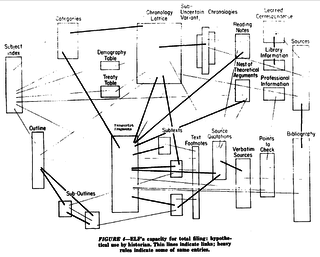
Original 17 rules
- Every Xanadu server is uniquely and securely identified.
- Every Xanadu server can be operated independently or in a network.
- Every user is uniquely and securely identified.
- Every user can search, retrieve, create and store documents.
- Every document can consist of any number of parts each of which may be of any data type.
- Every document can contain links of any type including virtual copies ("transclusions") to any other document in the system accessible to its owner.
- Links are visible and can be followed from all endpoints.
- Permission to link to a document is explicitly granted by the act of publication.
- Every document can contain a royalty mechanism at any desired degree of granularity to ensure payment on any portion accessed, including virtual copies ("transclusions") of all or part of the document.
- Every document is uniquely and securely identified.
- Every document can have secure access controls.
- Every document can be rapidly searched, stored and retrieved without user knowledge of where it is physically stored.
- Every document is automatically moved to physical storage appropriate to its frequency of access from any given location.
- Every document is automatically stored redundantly to maintain availability even in case of a disaster.
- Every Xanadu service provider can charge their users at any rate they choose for the storage, retrieval and publishing of documents.
- Every transaction is secure and auditable only by the parties to that transaction.
- The Xanadu client–server communication protocol is an openly published standard. Third-party software development and integration is encouraged.
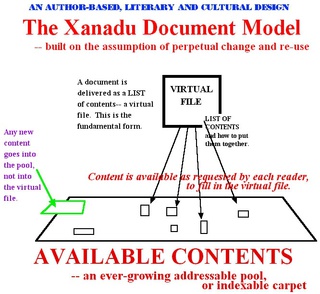
1963
Hypertext
Ted Nelson (born 1937), an American pioneer of information technology, philosopher, and sociologist coined the terms hypertext and hypermedia.
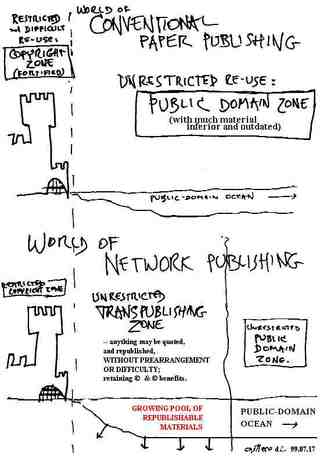
A New Home for the Mind?
By Ted Nelson
______________________________________________________________________
- Back to 1982: The Search For A Hypertext XANADU
This seminal work by computer visionary Ted Nelson appeared in the 25th anniversary year in March 1982 of DATAMATION Magazine. In it, Nelson correctly fortells the emerging technologies of today: Simple desktop computer interfaces, the World Wide Web, net work agents, and Hypertext Markup Language. He dubbed the concept Project Xanadu, Inc.
_____________________________________________________________________
Simplicity almost never happens by itself; it must be designed.
There are many computer programs for dealing with complexity. Unfortunately, as a rule, they generate more complexity. Many systems that start out simply, like order processing or invoicing, are appallingly complex in their full-blown computer regalia. As a result, many computer people see their jobs as the managem ent and perpetuation of this complexity.
An alternative to this care and feeding of ever more complex systems based on simplistic frameworks is to seek a framework that holds and deals with ideas and their relationships in their natural form and structure, in their full and exact intricacy. To face squarely and early the natural implications of a process brings simplicity in the long run.
A situation where this choice can be made is upon us now with the arrival of cheap word processing systems. These machines help create, manipulate, and store people's ideas in the form of written documents. Many of these documents relate to each other quoting in part or whole, referencing through footnotes and bibliographies, or merely sharing similar ideas. It is often necessary to store many copies of one document to assure safety from accidental deletions, provide a means for backtracking through successive states of the document, and for repeated use by other documents.
The safety of documents should be taken care of automatically; that it is still a problem shows the low state of the art. Backtracking is an important consideration. Although we do not need to go back through previous material often, we should be able to do it right when we do. Here is what doing it right entails:
______________________________________
An important choice faces us: let the
computer perpetuate archaic methods
of publishing, or use it to vault our
minds into a hyperspace of thought.
Suppose we create an automatic storage system that takes care of backtracking automatically. As a user makes changes, they go directly into the storage system, filed chronologically. The user may then refer not merely to the present version of a document, but may go back in time to any previous version. He must also be able to follow a specific section of a document back through time, studying its previous states. We need not go into technical details here, but it is obvious that such a system departs from conventional block storage. It would store material in fragments under control of a master directory which indexes by time and other factors.
This same scheme can be expanded to handle alternative versions, more than one arrangement of the same materials, a facility that writers and programmers could certainly use. Alternative versions are important in many boiler plate applications, such a law and public relations writing, where the same materials are churned out repeatedly in different arrangements and variations. A master indexing scheme could greatly reduce storage requirments in these applications, and make the relations among documents much clearer.
Of course, a facility that holds many versions of the same material and allows historical backtracking is not terribly useful unless it can help intercompare different versions in detail, unless it can show you, word for word, what parts of two versions are the same.
Lawyers could use this facility to compare wordings. Congressmen could compare different draft versions of legislative bills. Authors could see what has happened to specific passages in their writing between drafts. Biologists and anatomists could compare corresponding parts of animals using a graphical database of physiology that shows evolving structure.
By creating such a capable storage system, we have greatly simplified the life of the text user. The nuisance of backup, and the spurious nonsense-task of finding names for backup files, is eliminated. More importantly, we have unified all versions (previous and alternative) in a single structure for ready reference. The user could scroll through any two versions to see corresponding part, and much more.
___________________________________
Adding a Link Facility
So far we imagine a new reading-and-writing box that behaves pretty much like a high-power word processor. Let us add one more facility, links.
To begin with, let us think of a link as simply an opportunity to jump away from some point in the text. A conventional footnote is a good example. An asterisk, say, signals that "there's something to jump to from here." If you point at it with your lightpen (or mouse or whatever), bingo! -- you're now at the footnote, or whatever else the author took you to. If you don't like it there, hit a return button and you're back to where the asterisk appeared. No harm has been done.
This simple facility--call it the jumplink capability--leads immediately to all sorts of new text forms: for scholarship, for teaching, for fiction, for poetry.
Marginal notes, like those scribbled in books, are another simple and important type of link. (Where the "margins" of the computer screen are --that it, how to show them--is a matter particular to your own screen setup.)
The link facility gives us much more than the attachment of mere odds and ends. It permits fully nonsequential writing. Writings have been sequential because pages have been sequential. What is the alternative? Why, hypertext--nonsequential writing.
Many, perhaps most, writers have been frustrated by the problem of choosing a sequence for the ideas they are presenting. Any sequence is generally arbitrary, and what is right for one reader may be wrong for another. Indeed, many writers have experimented with nonsequential forms--one of my favorites is Nabkov's Pale Fire--and I think such forms have proved gratifying. They are not necessarily easy to work with, however. That is because existing mechanisms punch us toward sequency. Even the best of commercial word processors.
________________________________
Hyperworld:
a vast new realm of published text
and graphics, available instantly;
a grand library that anybody can
store anything in.
I have so far presented several new capabilities that I think are important: alternative versions and historical backtrack, both with sameness display, and links.
These work together; they have to. The links allow the creation of nonsequential writings and jump-structures graphics of many kinds. But if you are going to have links you really need historical backtrack and alternative versions. Why? Because if you make some links on Monday and go on making changes, perhaps on Wednesday you'd like follow those links into an updated version. They'd better still be attached to the right parts, even though the parts may have moved. And the sameness display allows the complex linked alternatives to be studied and intercompared in depth.
Let us call this Stage One: a system of computer storage that holds small pieces of a document, not big blocks, and instantly assembles them into any part of whichever version you ask for. That allows you to create links of any kind you want between any things you want, and shows you which parts are the same between related versions. Let us call such a storage systems a hyperfile.
Electronic publishing is coming; this much we all agree on. Just what it will be is not so clear. For some five hundred years the public has been reading from books and magazines of paper. Now all that may change.
As computer CRT screens become more and more available, there is less and less reason for printing on paper. The costs of wood pulp and gasoline, the long lead times of editorship and production, the increasing divergence of specialized interests, and the lowering cost of computers with screens, of disk storage, and digital communications, all suggest this.
Beginning thinkers in this area often suppose that what will be offered to the screen reader will be merely individual stored documents, available on-line quickly, but based somehow on conventional documents nestling in conventional sequential computer files. My view is quite different.
Consider the hyperfile we just finished expounding. Why can't we extend it into a full publishing system? Once the package allows linkage and backtracking, why not extend it? Why not allow anyone to create links between documents, allowing jumps straight from one to another? If documents can be reached and used on-line by anyone, all we need additionally is the ability to create links among them--to make our own bookmarks and marginal notes, to quote from them by direct excision. And why not, indeed, allow users to assemble collections of documents into larger ones?
Royalties will have to be paid, of course. Since there is no controlling what happens at the user end, this royalty should be automatically recorded and largely based on transmission time. An hour, five minutes, or one second of a thing, each contribute proportionally to the copyright holder's account. I will bypass the question of whether different rates of royalty should be allowed.
________________________________
Original Document Remains
The logic of such compound documents is simple and derives from the concept of document ownership. Every document has an owner. The integrity of this document is maintained; no one may change it but the owner.
Someone else, however, may create a document which quotes it or revises it; this document, too, retains its integrity. That means you can indefinitely create new documents from old ones, making whatever changes seem appropriate. Originals remain unchanged.
What's more, since the copyright holders gets an automatic royalty, anything may be quoted without permission. That is, publishing through such a net requires implicit permission for your work to be quoted ad lib. You publish something, anyone can use it, you always get a royalty automatically. Fair. Especially if the reader can always say, "Show me what this was originally."
But this means a whole new pluralistic publishing form. If anything already published can be included in anything newly published, any new viewpoint can be fairly presented. For example, my great-grandfather, Edmund Gale Jewett, believed that one word in Hamlet was incorrect. It should have been "seige," not "sea of troubles," in the well-known soliloquy, he thought.
Very well,. If Hamlet is on the systems, then E.G. Jewett could publish his own Hamlet very easily: a quote-link to the whole original, except for "sea," which is changed to "siege."
Now, the obvious rules of the road should be as follows:
- Shakespeare's hamlet is of course unchanged and available instantly.
- Jewett's modified version of Hamlet, composed almost entirely of the original, is also available instantly. Jewett may give it any title he wants.
- Shakespeare--or presumably some Needy Author's Fund--gets the royalties for the portion of Shakespeare's Hamlet summoned by readers.
- When people read Jewett's Hamlet, the author's fund still gets the royalty on Shakespeare's behalf almost all of the time. But Jewett gets a minute proportion of the royalty for the change he has made, whenever a reader encounters that part.
- Anyone reading Jewett's version can say, "Show me the original of this next to it," or just "Take me to the original."
- Anyone reading Shakespeare's Hamlet can say: "What documents have links to this?" or "Are there any alternative versions?" and get a list that includes Jewett's version.
Note also the modest cost to Jewett should he "publish" his text: the storage cost for a few hundred bytes to hold ID, pointers, and changes. Also, note that this arrangement is fair, orderly, and simple. These seem to me very important features.
The overarching vision I propose, then, we might call a "hyperworld" --a vast new realm of published text and graphics, all available instantly; a grand library that anybody can store anything in--and get a royalty for--with links, alternative versions, and backtrack available as options to anyone who wishes to publish them. It is a world:
- whose documents window and link freely to one another;
- where every quotation may be traced instantly, and seen in its original context;
- where minority interpretations and commentary may be found everywhere;
- where any point of view disagreed with may at once be restated "in the margin," with only minor changes, by any commentator; thus good explanations of everything soon become available;
- where a collage of parts can be assembled by anyone into a unifying vision, but the doubtful reader may wander off into a constituent part and not return;
- where an article published on Wednesday is festooned with disagreements by Friday, widely windowed the following week, forgotten the next year, rediscovered in a decade.
Scholarship becomes piled high with popularizations. Good questions, good diagrams, propagate through this electronic literature like wildfire, as everybody uses them.
The tangle of links will grow. Professional indexers will create directories of what they think we'll want to see, and collect a whiff of royalty every time you veer through their directory. (The system must not have an official directory; that implies an official set of categories--a bias best left to users.)
Is this chaos? Not at all. Because at any one time you are within one specific document, the work of a specific author. If this work is windowing to other documents, nevertheless you are still not "in" the others, but viewing them through the present author's textual filter.
Think of the present document as a sheet of glass. It may have writing painted on it by the present author; it may have windows to something else, but these windows may have, as it were, colored cellophane or opaquing on them. It is only when you step through the window--which you may do at any time--that you reach the original. But stepping through the window means turning one glass page and going on to the next. Now you are in another work.
________________________________
Simple and Orderly
Now reconsider what we said before about simplicity. Simplicity must be designed, but it should reflect the true inner structure of something. Many approaches to electronic publishing are very complicated. But that can't work on a broad scale: the word publishing itself suggests use by the public. Meaning simplicity. For thousands of years we have had a tradition we call literature. Its inner structure has been that of documents, each with an owner/creator, which quote and refer to one another in an ever-growing snowball. All I am proposing here is to electronify and hasten access to this very traditional structure--but with suitable enhancements arising from available software techniques.
The result is a seemingly anarchic pool of documents, true, but that's what literature has been anyhow. Yet I see this new world as orderly in two ways. Its orderliness is not, as some would suppose, imposed by the computer or its administrators, but by something which arose long ago in the natural structure of literature, and which we are merely retaining.
________________________________
Not too many people have noticed
that the CRT is an ideal two-person
device. Every computer screen
should have a jump seat.
One kind of order, on the small scale, is simply the distinction between documents and the enforcement of ownership. You know who created whatever you're looking at; despite the staggering pluralism, each thing is kept separate and intact because only its author, or publisher, controls it. No one can ever be misquoted except by making a copy, rather than a quotation-link, and that can be easily recognized as suspicious.
The other form of order is the long term orderliness of ideas, which is ever created and re-created by commentators, paraphrasers, anthologizers.
I see a world where people are brought together by the computer, rather than driven apart by television. The computer screen is really a very social instrument. Not many people have noticed that the CRT is an ideal two-person device. Sure, much of the time there's only one person at it, but often there are two. And when there are two people, the situation is socially interesting: they are usually in a colleague relationship. Two people sit, chat, exchange ideas as they browse, decide together what to do next. Bossy authority does not fit well when two people are looking at a tube and chatting. "Suppose we try this," one will say, or, "Let's do that." One may be officially the other's boss or teacher, but the relationship is softened, made more sensible and open to ideas from both. One moral is that every computer screen should have a jump seat. As CRT furniture and mountings are better designed, the computer and screen will no longer be a stack of boxes to be placed on a wooden desk, but an integrated piece of furniture with suspended tube, coordinated work surfaces, and bucket seats. Or rather a pilot's bucket seat and colleague's less comfortable pullout seat. Kibitzers will have to stand.
As explorable graphics and simulations are added to our hyperworld, the compute screen will be more and more a new kind of shared social environment. I see little kids at play in spaceships and far galaxies, but with characters on the screen that they've borrowed from here and there. Barbie, the Wizard of Oz, Captain Midnight, and Shaft can be toys in Eriador or the palace of Ming the Merciless, because graphical pieces may be drawn from everywhere. The kids build worlds and castles in two-dimensional collages, which can always be there when they come back, unlike wooden blocks that clutter the living room. Later, as 3D imaging systems like CHARGE become available, the hyperworld can include three-dimensional dataspaces.
I see adults who were "afraid of science" learning physics at the wheel of a video game, combining one author's graphics with another's simulations and still another's sound synthesis; where dings and roars and acceleration make the ideas come alive.
I see families together again, actively sharing. Imagine a kid and her father browsing through an illustrated hypertext:
"Gee daddy, a brontosaurus! Let's animate him!"
"Like this?" The father finds several animations that have been published for this brontosaurus. Choosing one, he makes the brontosaurus walk and eat.
"I wonder what the bones of the dinosaur look like while he's walking," ruminates the child.
Father links to bones while maintaining the animation. Now the skeleton walks inside its outline, still munching on trees.
"Oh, save that, daddy!"
Daddy hits a button and a private link is created to the original dinosaur picture, the animation frame, and the skeleton--all of which may be brought together again, with time and date, when the child wants to see her "dinosaur picture."
Hey, here we are in Snow White and the Seven Dwarfs. A Disney vision. Shall we jump sideways on links to older illustrations? Yikes, the 19th century engravings are too sinister. Let's see if this passage has a corresponding part in the Donald Barthelme version.
Once we can have full and independent linking and windowing, scholarship changes dramatically. A commentator or critic can underline precisely what he is referring to at any time, and gather together whatever pieces support his thesis. Intercomparison and exegesis become easier to do and easier to follow. Detailed annotations to existing writings may easily be published, anthologies of related materials can easily be put together.
Perhaps most important, this richness and completeness becomes available to students who before have had to deal with simplified, bowdlerized, and gutless materials.
Consider schools. From the one-room schoolhouse, a cooperative endeavor fostering individual goals and abilities in a sharing atmosphere, we went to a batch-processing system with inane fixed curricula, arbitrary and meaningless standards of success and failure (what in hell does a "B" in geometry mean?), and teaching as a platoon-control process. Human mentality, even for the "well educated," has been kept by the educational system and popular outlook far below the levels we can, and ought to, attain.
Why is it that schools are by their nature boring and oppressive, yet museums, which may cover the same subjects, are liberating and exciting to kids? The answers are fairly simple: one is dull, the other is vivid; one is confining, the other is free.
Now there ought to be a way--there's going to be a way--to combine the freedom of a museum with a reasonable criteria system for monitoring achievement.
Aside from the merest basics, it is not important what you learn, it is important that you learn, and if there are a lot of choices then you are going to choose one for yourself and succeed for yourself; thus you feel gratified from the learning process and competent to continue it, and those are two outcomes the schools have studiously avoided.
How to bring out the excitement, controversy, drama, of all the world's subjects, put this in a voluntaristic and uncontrolled framework, and keep it orderly? By creating, I think, a whole new hyperworld where we fly our CRTs through text and graphics of every kind, and a social world built around it--where ideas become important.
There are several key problem areas.
- Curriculum. It is unfathomable to me, when so little education is cumulative and when adults say over and over that they don't remember what they "learned" in school, why curriculum is assumed to be of any importance, though to be anything other than a pointless and painful charade. Nobody learns it anyway; it's simply an administrative runaround. ("Curriculum" originally meant "racetrack.")
- "Subjects." There are no "subjects." Everything is deeply intertwingled. Supposed subjects are arbitrary divisions in the infinite tapestry of human ideas and concerns. The true interconnectedness of knowledge, as well as the sweeping disagreements that make scholarship interesting, should be available to students at all levels.
- Personal conflicts. The problems between teacher and student of personality, authority, and outlook often swamp whatever else is supposed to be going on. There has got to be a way around this.
- Cognitive style. Different people learn best in different ways, and anything could be taught in any style--but much energy is wasted on promoting cognitive style as well.
________________________________
In compound hypertext, you
are free to write marginalia of
disagreement anywhere -
which everyone else is in turn
free to ignore.
There is crucial distinction between hypertext and computer assisted instruction. It is simply one of freedom. In computer assisted instruction, the author can lock you into a specific situation and there you are--constrained to do the task that has been set for you, however long it takes, however oppressive and stupid it may be. And there is typically no way to register a disagreement.
In compound hypertext, however, we retain one of the great traditions of Western literature: freedom to turn the page or close the book. You are free to write marginalia of disagreement anywhere--which everyone else is in turn free to ignore. I believe that the rigidity and narrow-mindedness of today's computer assisted instruction will open out into the freedom of hyperworld exploration.
And the two-seat hypertext screen may just restore the convivial qualities of bygone education and of personal tutoring, as the teacher drops into the jump seat at the student's computer and makes suggestions rather than gives orders.
If there is a published, widely pluralistic tapestry of writings on all topics, then each reader, old or young, can find the style that best suits him or her for pursuing a specific topic.
One of the dullest subjects I took in school was "history." It was a tiresome enumeration of names, wars and dates with no particular meaning. But I loved historical movies; they had heroes with a purpose. Now in fact historical scholars are often vitally concerned with heroes and their purposes. How do the schools mange to make these things dull?
Why shouldn't the students have access to material that makes the motivating controversies, the heroes and high spots of history come alive--and then link sideways between documents to the more factual material? By what paths did the tribes reach Europe? (What universal rules of tribalism are there, if any?) Was the legend of Valhalla really inspired by the Roman Colosseum? What really happened before the Thera/Atlantis explosion? What did the Tower of Babel look like?
________________________________
An Everwidening Tree
We can't know, but we can conjecture; there is an ever-widening tree of possibilities. I want to explore it, and I'm sure other kids would love it too.
Imagine: Hyper-poetry--collages of pieces of text that cleverly intertwine, or even rhyme.
Hyper-valentines--send a loved one a picture with little doors that open into all kinds of wonderful places in the hyperworld.
Minority voices--every viewpoint should be easily heard. Of course, this does not mean people will listen. But the problem of "media coverage," a chafing-point for minorities who feel that their views cannot be heard, is in a sense solved.
High ideals--what passes for high ideals often isn't worth a gumball. The drabness of most computer ideals is a downer, like being sprayed with wet concrete: "New tools for management," "Better throughput," "Instant file cards for libraries." This is worth spending your life on? With word processing and shoot'em-up arcade games, interactive computing and graphics have at last reached The People, and indeed threaten to transform society. But is this the kind of transformation we ought to be thinking about?
___________________________________
If all this seems like a wild idea,
that means you understand it.
These are times wild with possibility.
Those who grew up believing passionately in ideals that made our country great, such as liberty and pluralism and the accessibility of ideas, can hardly ignore the hope of such an opening-out. Libertarian ideals of accessibility and excitement might unseat the video narcosis that now sits on our land like a fog. I want to see the writings of Herodotus, Nostradamus, and Matthew Brann as accessible as those of Rod McKuen, along with the art of the Renaissance and movies of tomorrow--an all-encompassing picture-book encyclopedia tumult graffiti-land, the Whole Works.
If this all seems like a wild idea, that means you understand it. These are times wild with possibility. In an age of pocket calculators, the Pill, hydrogen bombs by rocket, and soap opera by satellite, we can try to create whatever wildness we want in our society.
And when the kids start being born up in the space colonies--do we want them to lose touch? Paper's too heavy to send up, but hypertext might be about right.
I say these worlds are possible soon. We need them, and they will make lots of money. The software is on the way. But what is really lacking are the visionary artists, writers, publishers, and investors who can see the possibilities and help carry such ideas into reality.
Written by Ted Nelson for the 25th anniversary year edition of DATAMATION Magazine (March 1982)
Source:
http://www.datamation.com:80/PlugIn/issues/bestof/xanadu.html
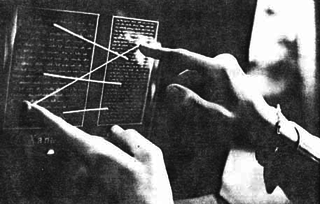

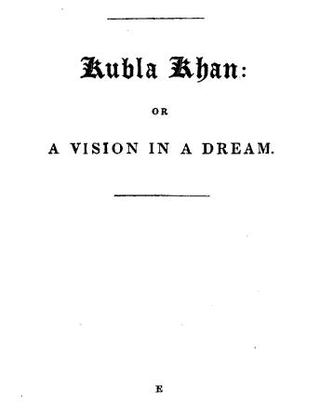

In Xanadu: Kubla Khan Poem
- A Vision in a Dream
Kubla Khan, that is, A Vision in a Dream is a poem written by Samuel Taylor Coleridge, completed in 1797 and published in 1816. The poem was composed one night after he experienced an opium-influenced dream after reading a work describing Xanadu, the summer palace of the Mongol ruler and Emperor of China Kublai Khan.
Upon waking, he set about writing lines of poetry that came to him from the dream until he was interrupted by a person from Porlock (a coastal village in Somerset, England), who had knocked on the door, destroying his vision, which would have continued for 200–300 more lines. So a "Person from Porlock", "Man from Porlock", or just "Porlock" are literary allusions to unwanted intruders who disrupt inspired creativity. He left it unpublished and kept it for private readings to his friends until 1816 when, at the prompting of Lord Byron (see the movie), it was published.
Published by Specter Resurrected Studio on 4 Nov 2016
Source: youtube.com
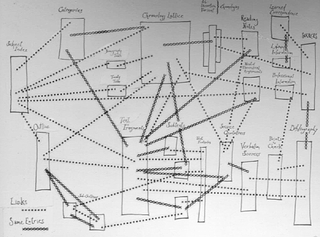
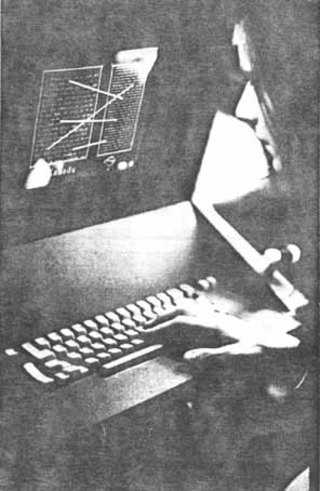
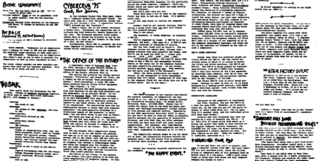
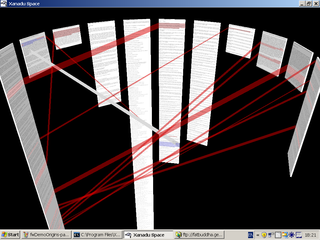
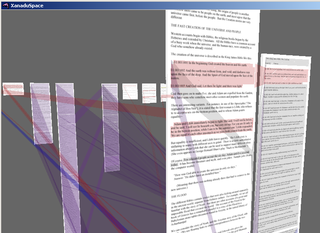
Xanalogical Media: Needed Now More Than Ever
"Literature" is what we call persistent media. The constructs of electronic literature are arbitrary and offer great possibilities yet ignored.
Electronic literature, after decades of little progress, has recently developed fast, but badly. The selection of literary constructs-- primitives for owned, persistent media-- has been crude. In particular, the World Wide Web is a delivery system for separate closed units-- a system which allows only embedded links pointing outward. This is simple but naive-- creating a tangle of ever-breaking one-way links, breaking whenever documents are moved or modified. It postpones the real problems.
The two-way link problem is merely dismissed; the more fundamental problems of intercoparison, version management, the correspondence of versions, and link maintenance as versions change, are not approached. Nor is the vital literary relation of transclusion (the management and intercomparison of identities of content among documents and versions). Rights management is not considered to be part of the structural model, but a separate legalistic issue to be handled by different mechanisms unrelated to the structure of documents.
By contrast, the xanalogical model of electronic media (best known by one trademark, Xanadu*) was always concerned far earlier with these deeper problems, and proposed to solve these problems with a specific simple structure. This structure handles version management, rights management, quotation management, the connection of quotations to their originals, the ability freely to quote without negotiation in any amount and to recomposite in any amount.
Central to the design are the literary constructs of 2-way content link, transclusion, and transpointing windows. The Xanadu system has always been a specific structure on any scale, though with different details, on which a specific publishing system was designed. Later Xanadu designs center around a unified address space for persistent media elements and its recognition by editing programs, caching methods and payment systems.
There is still a prospect for a serious electronic literature with these desperately-needed features; our work now concerns how to add these features to the Net as components on a step-by-step basis. Components of the Xanadu code developed by XOC, Inc., now available in Open Source, may plan a useful part.
Source:
http://xanadu.net/NOWMORETHANEVER/XuSum99.html
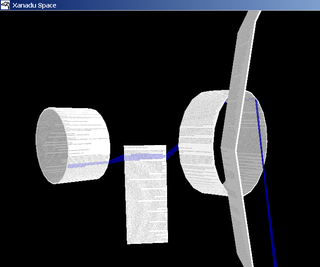
Xanalogical Structure, Parallel Documents, Deep Links to Content,
Deep Versioning, and Deep Re-Use
by Theodor Holm Nelson
Project Xanadu, the original hypertext project, is often misunderstood as an attempt to create the World Wide Web.
It has always been much more ambitious, proposing an entire form of literature where links do not break as versions change; where documents may be closely compared side by side and closely annotated; where it is possible to see the origins of every quotation; and in which there is a valid copyright system -- a literary, legal and business arrangement -- for frictionless, non-negotiated quotation at any time and in any amount. The Web trivialized this original Xanadu model, vastly but incorrectly simplifying these problems to a world of fragile ever-breaking one-way links, with no recognition of change or copyright, and no support for multiple versions or principled re-use.
Source:
http://cs.brown.edu/memex/
Where is Xanadu?
The Site of Xanadu (Shangdu of the Yuan Dynasty) The Site of Xanadu, located on Jinlianchuan Prairie and the north bank of the Shandian River, is 12 miles (20 kilometers) northwest to the center of Zhenglan (Xulun Hoh) Banner of Xilingol League, Inner Mongolia in north China.
Source:
travelchinaguide.com

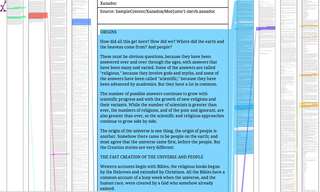
I Think I Know Who Satoshi Is
The creator of Bitcoin-- who I think he is, and why.
Published by TheTedNelson on 17 May 2013
Can We Get to Xanadu?
Ted Nelson’s Xanadu is one of the most important and most maligned ideas in computer history. Why has it held such sway after more than 50 years? Why isn’t there any working software for download or a GitHub community of devs? Is Xanadu so difficult to achieve that no one call pull it off, or are there other factors? These are questions I’ve attempted to answer for myself.
Where It All Started
Nelson’s books Computer Lib and Dream Machines, published as a single volume and bound together, are the geek’s version of Be Here Now by Ram Dass. The books are amazing and indescribable, remarkable for their breadth and freshness, completely unorganized, and impossible to navigate. These are the first hand accounts of a brilliant traveler to a new place, witnessed and narrated for us in stream-of-consciousness style. Ram Dass was also a former academic turned on by the new and drug-induced culture of the sixties, and like him, Nelson conveyed enough “key driver” ideas to have inspired generations since. By 1980 in Literary Machines, he had formalized the main goals of Xanadu into a list of 17 rules. Let’s see which of these buckets each rule falls in.
Source: https://mimix.io/getting-to-xanadu/
JavaScript is turned off.
Please enable JavaScript to view this site properly.